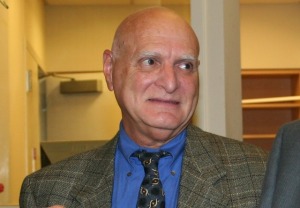by
Barbara Kram, Editor | January 29, 2010

Leonard Arzt, Executive
Director, National Association
for Proton Therapy
When the President of the United States gives a major address such as the State of the Union Wednesday night, everything he says, doesn't say, or postpones till late in the talk, takes on heightened meaning.
For instance, healthcare reform was notably deferred till the second half of the speech. But, in an earlier reference, when the president was enumerating his priorities for investments in innovation including clean energy, he also referenced high-tech cancer therapy.
Obama said, "Last year, we made the largest investment in basic research funding in history, an investment that could lead to the world's cheapest solar cells or treatment that kills cancer cells but leaves healthy ones untouched."



Ad Statistics
Times Displayed: 131826
Times Visited: 7470 MIT labs, experts in Multi-Vendor component level repair of: MRI Coils, RF amplifiers, Gradient Amplifiers Contrast Media Injectors. System repairs, sub-assembly repairs, component level repairs, refurbish/calibrate. info@mitlabsusa.com/+1 (305) 470-8013
That important and specific reference was certainly not lost on
Leonard Arzt, Executive Director, National Association for Proton Therapy.
"The proton community interprets that to mean the President was referring to proton beam radiation therapy, an innovation stemming from the Department of Energy's high energy physics research program and a breakthrough in the government's medical technology transfer role into health care for treating cancerous tumors while sparing healthy cells and tissues in patients," Arzt told DOTmed in an email statement.
"Proton therapy is now offered at seven centers in the U.S. and is the only form of radiation treatment resulting from our energy investments that specifically 'kills cancer cells but leaves healthy ones untouched.' President Obama was a strong supporter of a potential new center in his state when he was in the Senate. We welcome the President's continuing support for the future growth and development of the proton beam technology."
Proton therapy requires a significant investment and originally grew out of government research into particle accelerators. Today's centers are often funded by public/private partnerships.
For more information, visit:
http://www.proton-therapy.org

